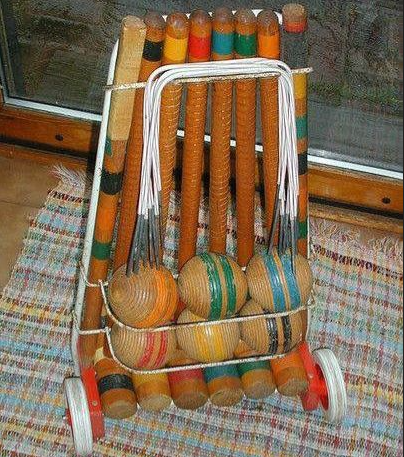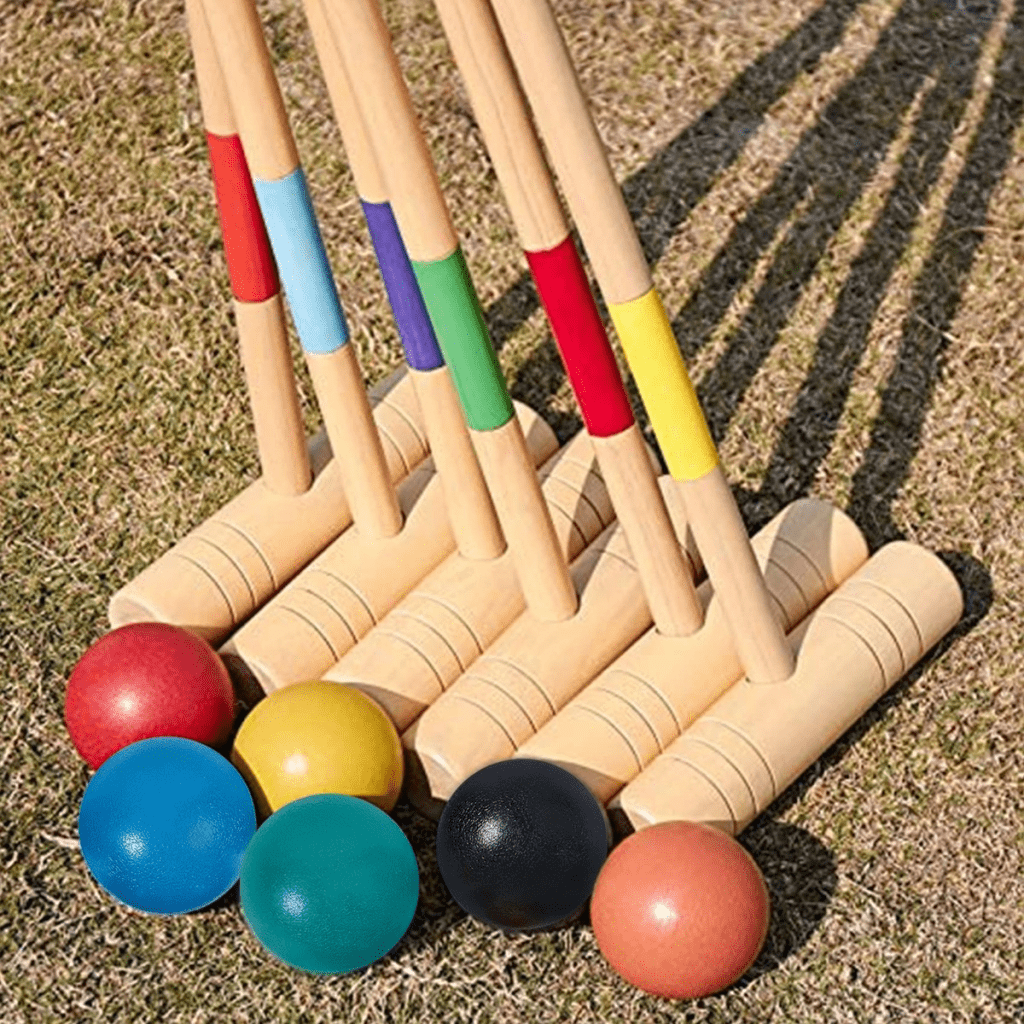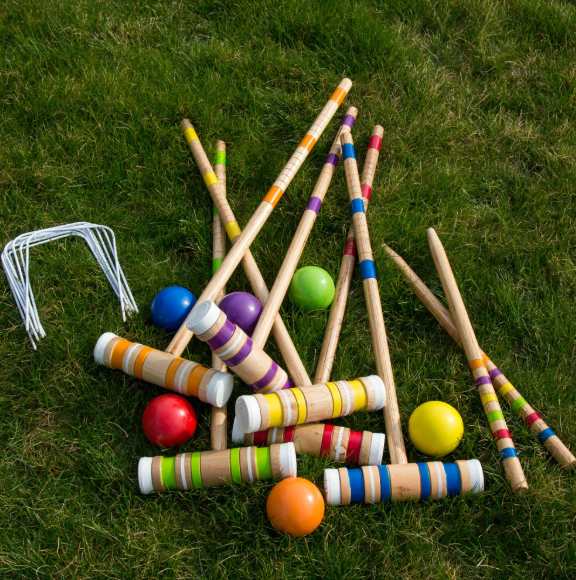The Forgotten Charm of Croquet: More Than Just a Lawn Game
Ever stumbled upon an old wooden set with long-handled mallets, colorful balls, and curved iron hoops—and thought, “What is this curious thing?” It might look like an antique relic or just another quirky backyard game, but what you’re seeing is far more than just lawn entertainment. That’s a croquet set, and it once held the same cultural weight as chess in castles or tea in Victorian gardens.
So, why did this game of hoops and mallets rise to elite status across continents—and then vanish from memory for many? Let’s dig into the charm, strategy, and hidden legacy behind croquet.

What Exactly Is Croquet?
Think of croquet as a strategic outdoor version of billiards, but on grass and with wooden mallets instead of cues. The objective? Use your mallet to knock your ball through a series of iron hoops (also known as “wickets”) in a specific order and direction, all while plotting moves to block your opponents.
It’s more than just hitting balls. Croquet combines precision, planning, and tactical defense—like chess, but you’re walking the board.
A Game with Deep Cultural Roots
Croquet’s exact origins are still debated, but by the mid-19th century, it had exploded in popularity across Europe and North America, especially among the upper classes. It became a staple in garden parties, afternoon socials, and country club events.
Video : Introduction to Golf Croquet
Why was it so beloved?
It required no athleticism, just wit and finesse. It was inclusive—women, men, young, old—everyone could play together. It made the perfect social game, encouraging conversation, playful rivalry, and even courtship.
By the 1860s, croquet sets with elegant wooden mallets, striped balls, and iron hoops became must-haves in aristocratic households. The portable rolling storage stand with wheels—a signature feature of old croquet sets—made it easy to set up in any grand lawn or picnic setting.
Croquet: A Strategic Mind Game on Grass
People often mistake croquet for a casual pastime. But here’s the twist: it’s a battle of tactics. You’re not just aiming for your hoops—you’re blocking others, knocking opponents’ balls off-course, and planning two or three moves ahead.
It’s like if chess and mini-golf had an elegant British baby.
Every swing can change the tide. Want to play defensively? Knock your rival out of position. Want to play offensively? Go for the double hoop with a single shot. It’s not random—it’s a game of patience, pressure, and precise judgment.

From Victorian Lawns to American Front Yards
In its heyday, croquet wasn’t just a game—it was a lifestyle marker.
Victorian England adopted it as a genteel activity, associating it with refined leisure and elegance. Elaborate croquet parties, complete with fine dresses and wide hats, became all the rage. By the time it made its way to America, it quickly earned its spot in both suburban backyards and upscale clubs.
But somewhere along the way, croquet faded. As newer, flashier sports took over (tennis, soccer, baseball), croquet quietly slipped into attics and estate sales.
Why Croquet Deserves a Comeback
Croquet is due for a revival—and here’s why:
It’s timelessly stylish. Classic croquet sets are gorgeous, with their polished wood, hand-painted balls, and vintage charm.
It’s low-impact but competitive. Perfect for mixed ages and skill levels.
It’s ideal for socializing. Whether it’s a lazy Sunday picnic or a summer evening gathering, croquet adds charm and structure to outdoor time.
Video : How To Play Croquet
It’s portable and easy to set up. The wheeled set holder—once a staple of old-school croquet kits—makes everything feel that much more refined.
And with today’s renewed interest in retro pastimes, mindfulness, and unplugged fun, croquet hits all the right notes.
How to Spot a Classic Croquet Set
The tell-tale features of a traditional croquet set include:
Long wooden mallets with cylindrical heads
Vibrant wooden balls, often striped or painted
Iron hoops (wickets) that are planted into the ground in a strategic pattern
A wheeled stand or wooden cart that holds all the equipment neatly
If you ever come across one at a flea market, estate sale, or in your grandparents’ storage room—don’t dismiss it. You’re holding a piece of leisure history.

Conclusion: A Game Worth Rediscovering
Croquet is more than just a game—it’s a glimpse into a slower, more elegant time. A time when conversation, cleverness, and community were at the heart of recreation. It brought people together without screens or scoreboards—just wooden mallets, a grassy field, and a playful spirit.
So next time you see that strange cart with mallets and hoops, don’t walk past it. Set it up, grab some friends, and rediscover the timeless joy of croquet. Because sometimes, the most charming stories are the ones hiding in plain sight—on the lawn, waiting for another turn.